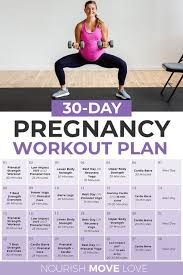Pregnancy Workouts: Staying Fit for Two
Exercise during pregnancy can have numerous benefits for both the mother and the baby. Staying active can help alleviate common discomforts like back pain, improve sleep quality, boost mood, and even make labor and delivery easier.
Safe Pregnancy Workouts
It’s important to choose pregnancy-safe workouts that are gentle on your changing body but still effective. Low-impact activities like walking, swimming, prenatal yoga, and modified Pilates are excellent choices for expecting mothers. These exercises help strengthen muscles, improve flexibility, and promote overall well-being.
Benefits of Pregnancy Workouts
Regular exercise during pregnancy can:
- Improve cardiovascular health
- Reduce the risk of gestational diabetes
- Help manage weight gain
- Boost energy levels
- Promote better posture and balance
- Prepare your body for childbirth
Tips for Safe Pregnancy Workouts
When engaging in prenatal exercise, keep these tips in mind:
- Stay hydrated and avoid overheating
- Avoid lying flat on your back after the first trimester
- Listen to your body and adjust intensity as needed
- Avoid high-impact activities or exercises with a high risk of falling or injury
- Consult with your healthcare provider before starting any new workout routine
Pregnancy Workout Classes and Programs
Many fitness centers offer specialized prenatal workout classes led by instructors trained in safe pregnancy exercise techniques. These classes provide a supportive environment where you can connect with other expectant mothers while staying active.
In addition to group classes, there are also online programs specifically designed for pregnant women. These programs often include a variety of workouts tailored to each trimester, ensuring that you exercise safely throughout your pregnancy.
Remember that every pregnancy is unique, so it’s essential to listen to your body and make modifications as necessary. By staying active with safe pregnancy workouts, you can enjoy a healthier pregnancy experience and set the stage for a smoother postpartum recovery.
Pregnancy Workouts: Understanding Fetal Safety, Belly Fat Myths, Exercise Importance, and Safe Routines
- What happens to fetus during exercise?
- Can I lose belly fat while pregnant?
- What happens if you don’t exercise during pregnancy?
- What workouts are safe during pregnancy?
What happens to fetus during exercise?
During exercise, the fetus experiences various physiological responses within the womb. When a pregnant woman engages in physical activity, her heart rate and blood flow increase, delivering more oxygen and nutrients to the placenta. This enhanced circulation can benefit the fetus by promoting healthy growth and development. Additionally, the rhythmic movements during exercise may have a soothing effect on the fetus, potentially calming them. It’s important to note that moderate-intensity exercise is generally safe for both the mother and the fetus, but it’s essential to consult with a healthcare provider before starting any new workout routine during pregnancy to ensure it is appropriate for your individual circumstances.
Can I lose belly fat while pregnant?
During pregnancy, it is not recommended to focus on losing belly fat. The priority should be on maintaining a healthy weight and supporting the well-being of both the mother and the developing baby. Pregnancy is a time when the body undergoes significant changes to accommodate the growing fetus, and attempting to lose belly fat could potentially harm the pregnancy. Instead, pregnant women are encouraged to engage in safe and gentle exercises that promote overall fitness and well-being without aiming for weight loss goals. It’s important to consult with a healthcare provider or a prenatal fitness specialist for guidance on appropriate workout routines during pregnancy.
What happens if you don’t exercise during pregnancy?
Not exercising during pregnancy can have various effects on both the mother and the baby. Without regular physical activity, pregnant women may experience increased discomforts such as back pain, swelling, and fatigue. Lack of exercise can also contribute to weight gain beyond the recommended range, which may lead to complications during labor and delivery. Additionally, not engaging in prenatal workouts can result in reduced muscle strength, flexibility, and cardiovascular fitness, making it harder for the body to cope with the physical demands of pregnancy and childbirth. Overall, skipping exercise during pregnancy may impact overall health and well-being for both mother and baby. It is important to consult with a healthcare provider before starting or modifying any exercise routine during pregnancy.
What workouts are safe during pregnancy?
During pregnancy, it’s important to focus on safe and gentle workouts that support the well-being of both the mother and the baby. Low-impact exercises such as walking, swimming, prenatal yoga, and modified Pilates are generally considered safe options for expecting mothers. These activities help strengthen muscles, improve flexibility, and promote overall fitness without putting undue stress on the body. It’s crucial to consult with a healthcare provider before starting any new workout routine to ensure that it aligns with your individual health needs and pregnancy status. Listening to your body, staying hydrated, and avoiding high-impact or risky exercises are key factors in choosing safe workouts during pregnancy.




